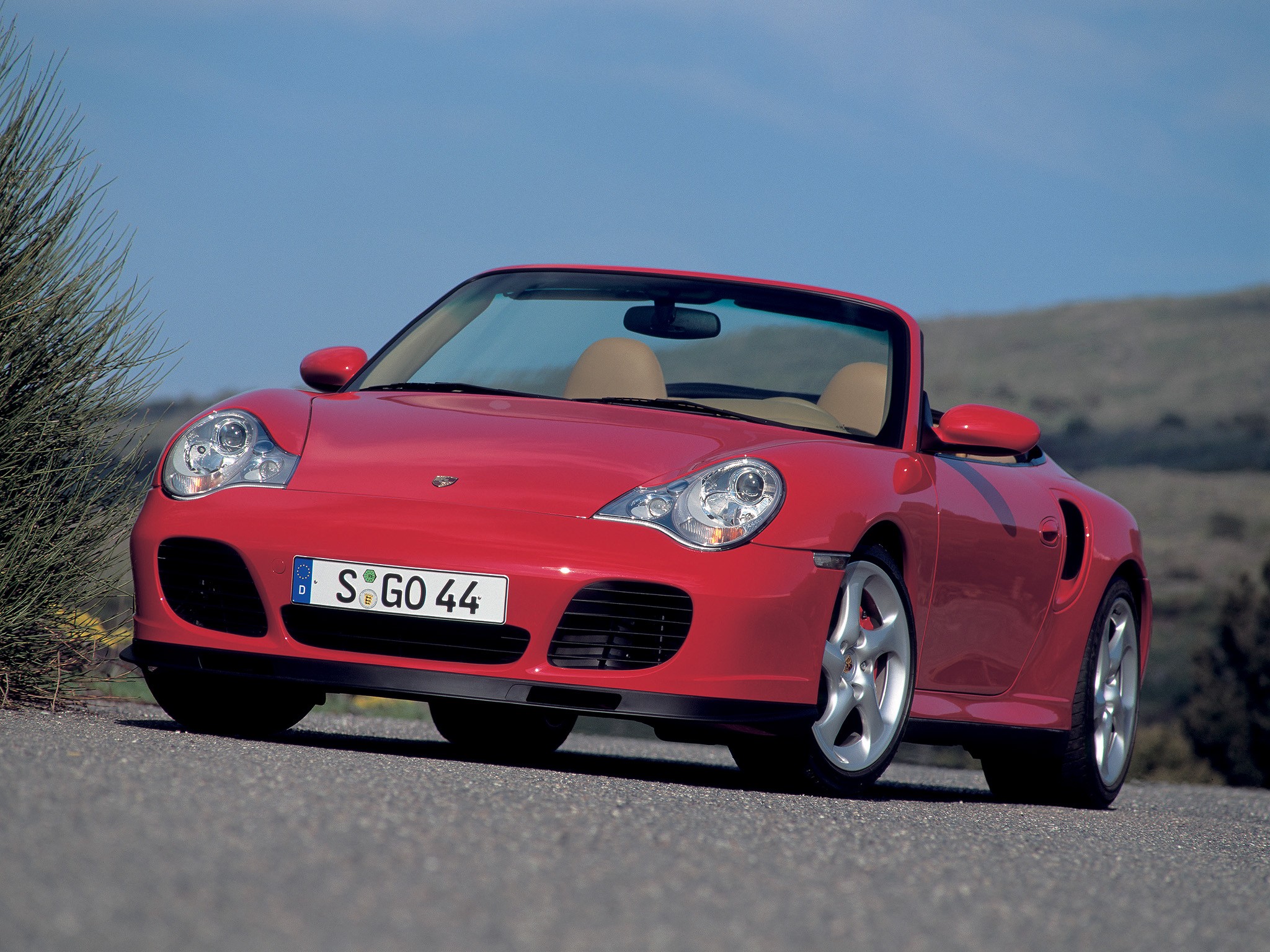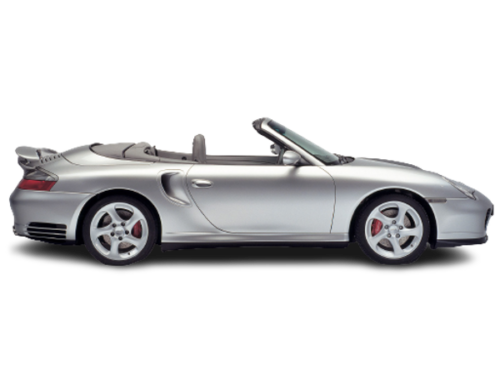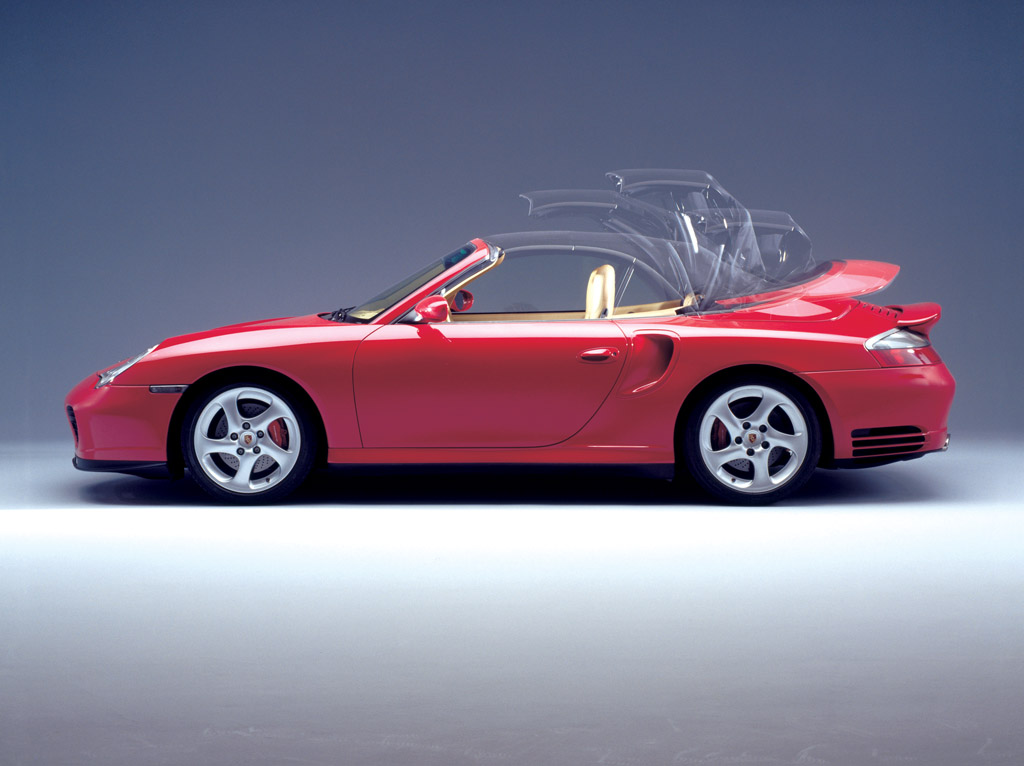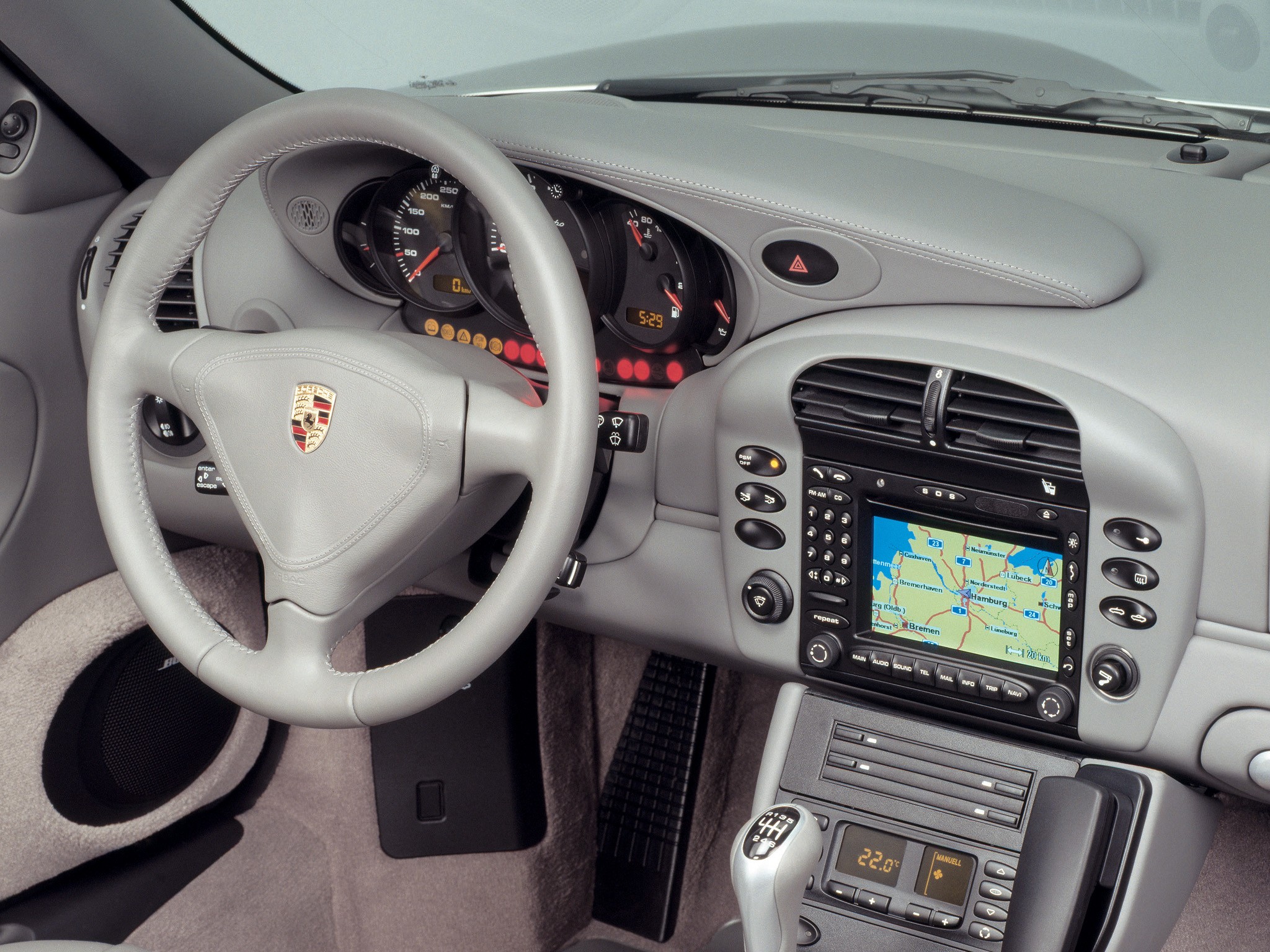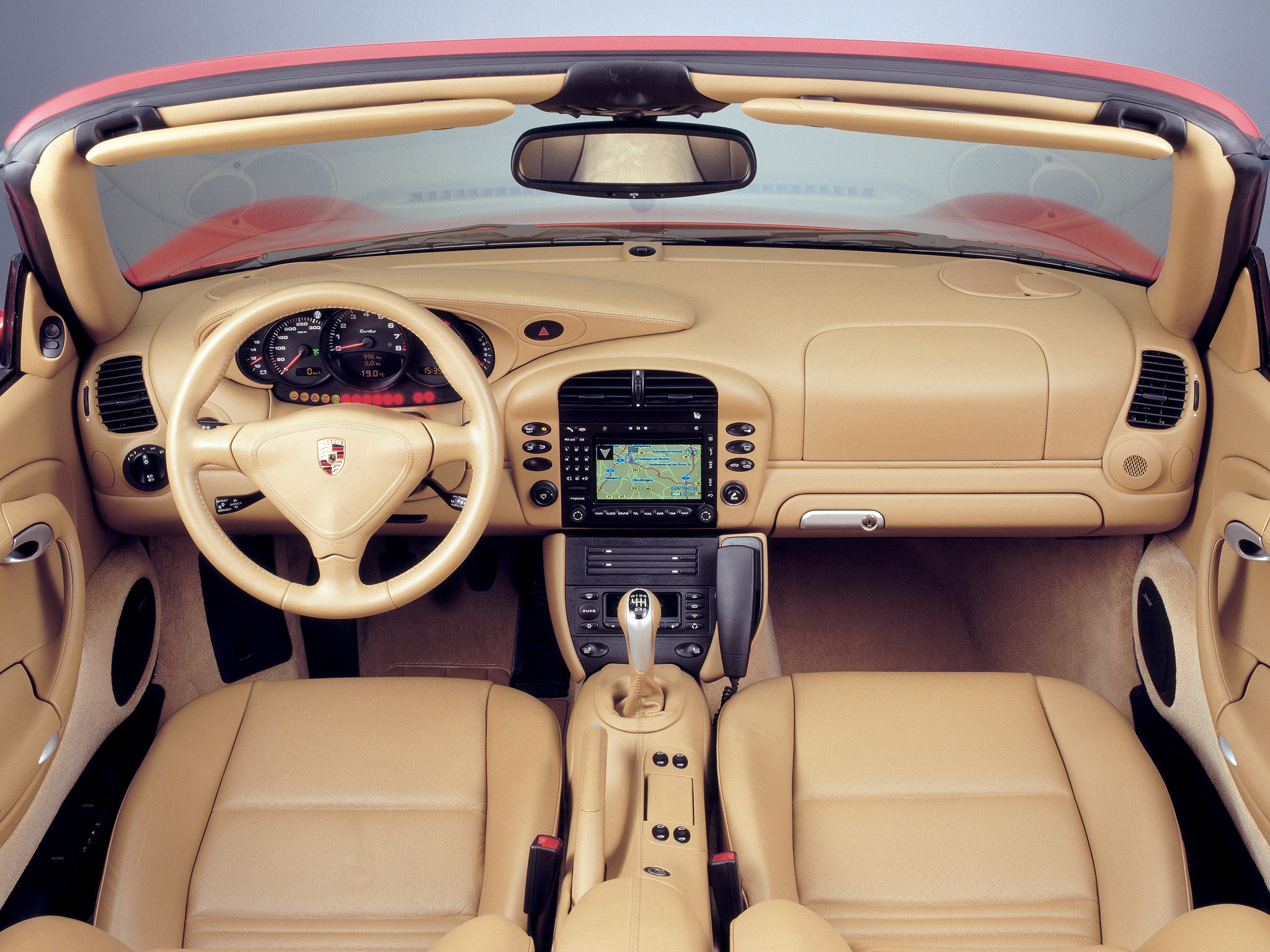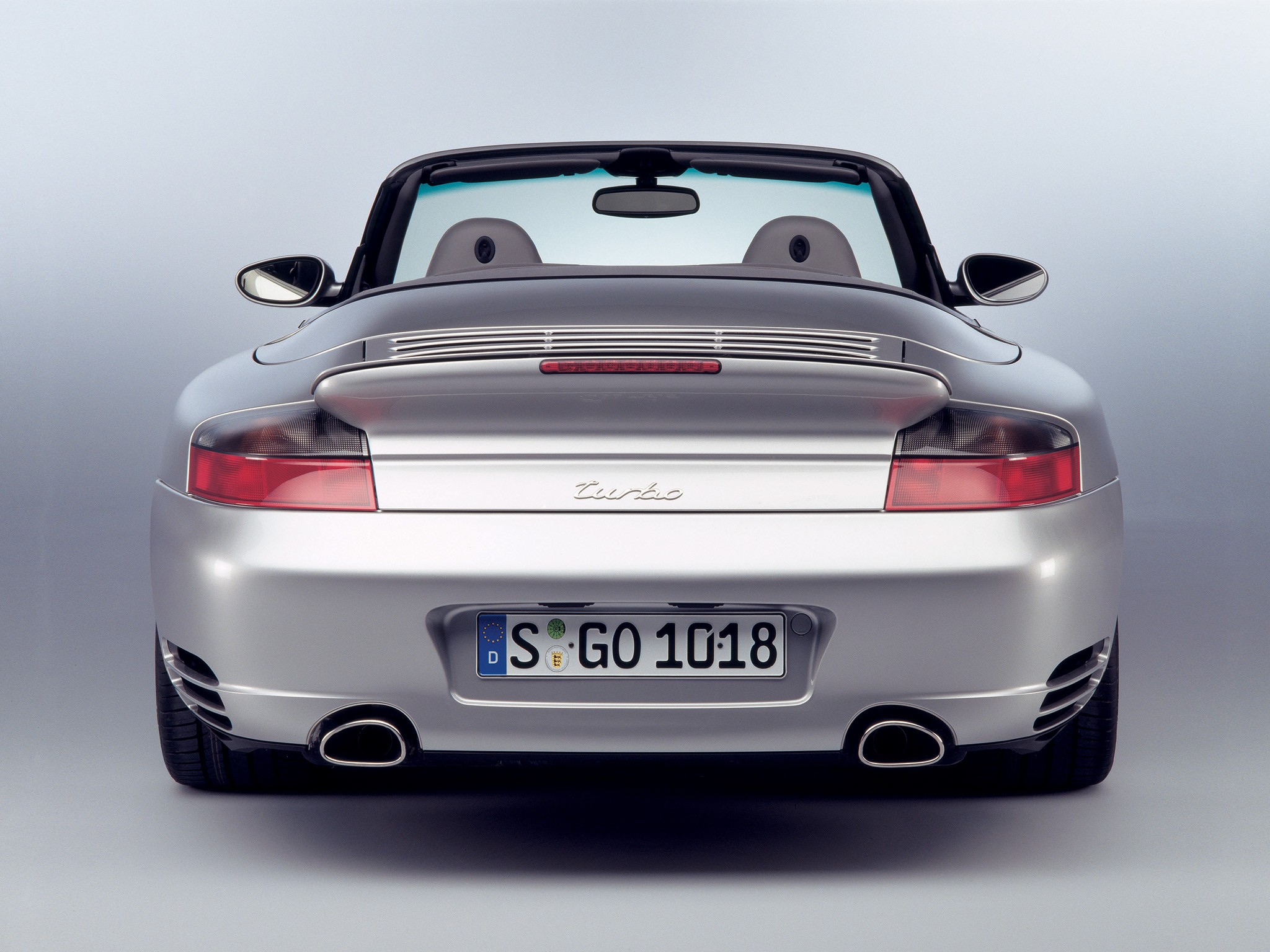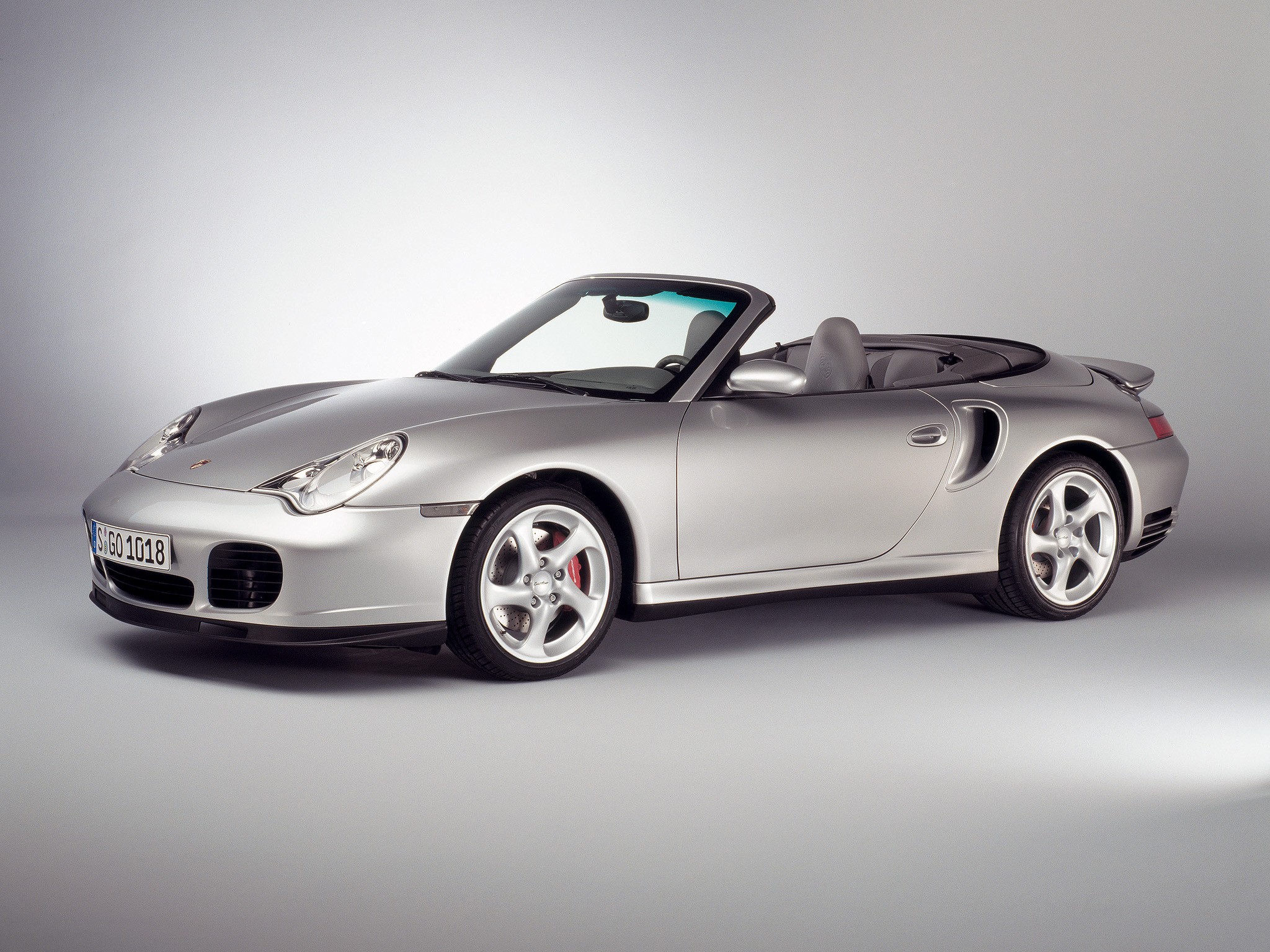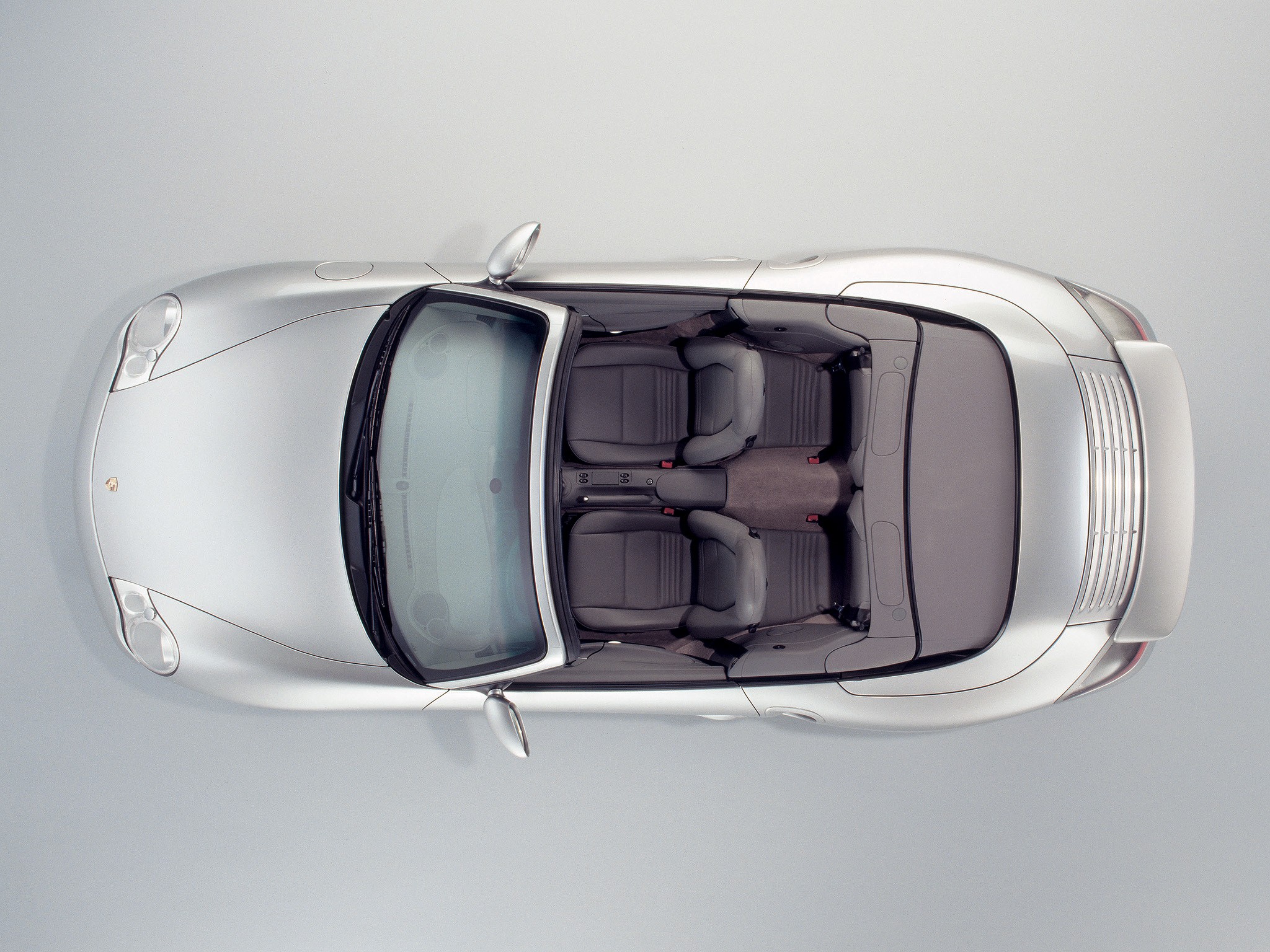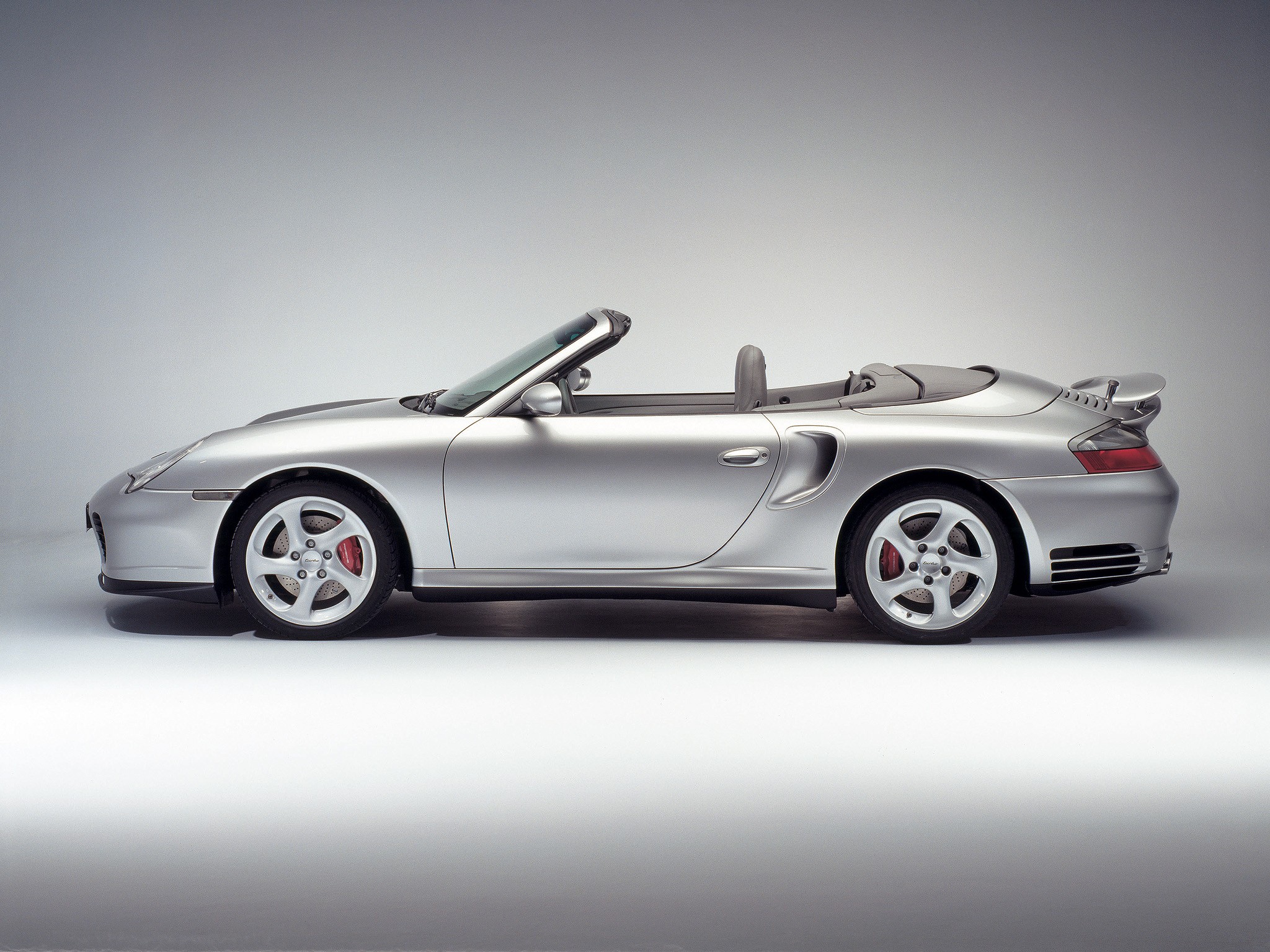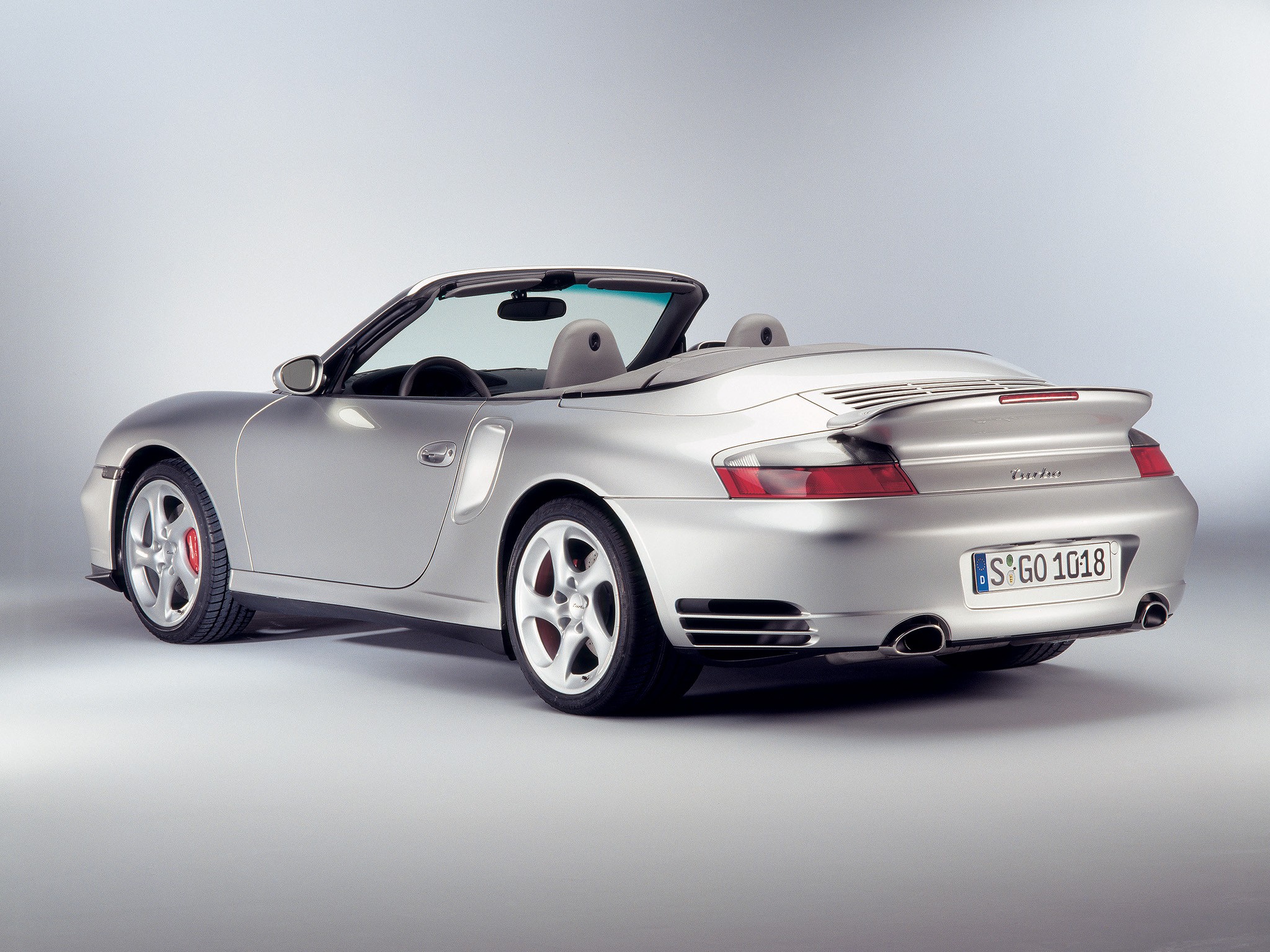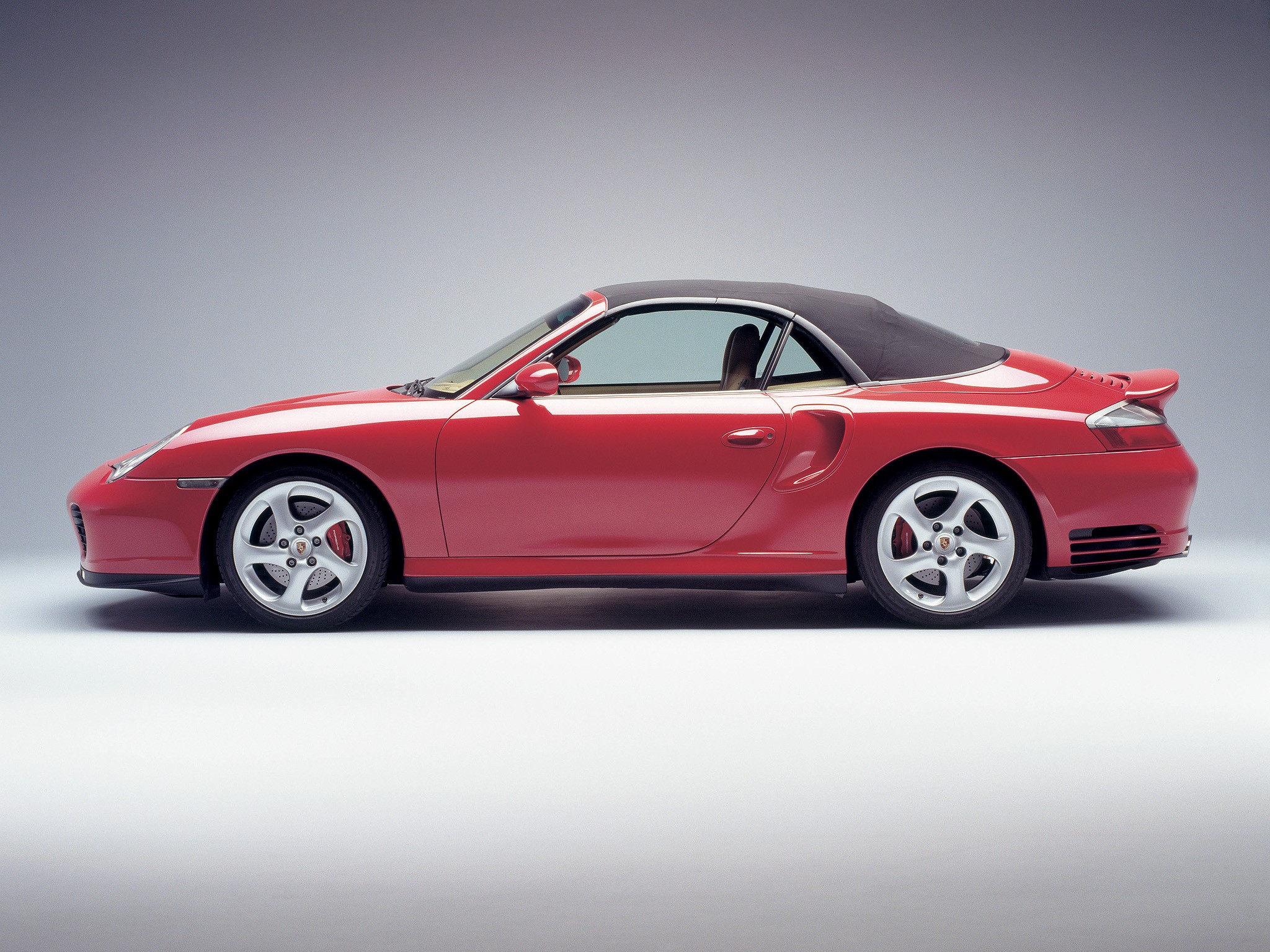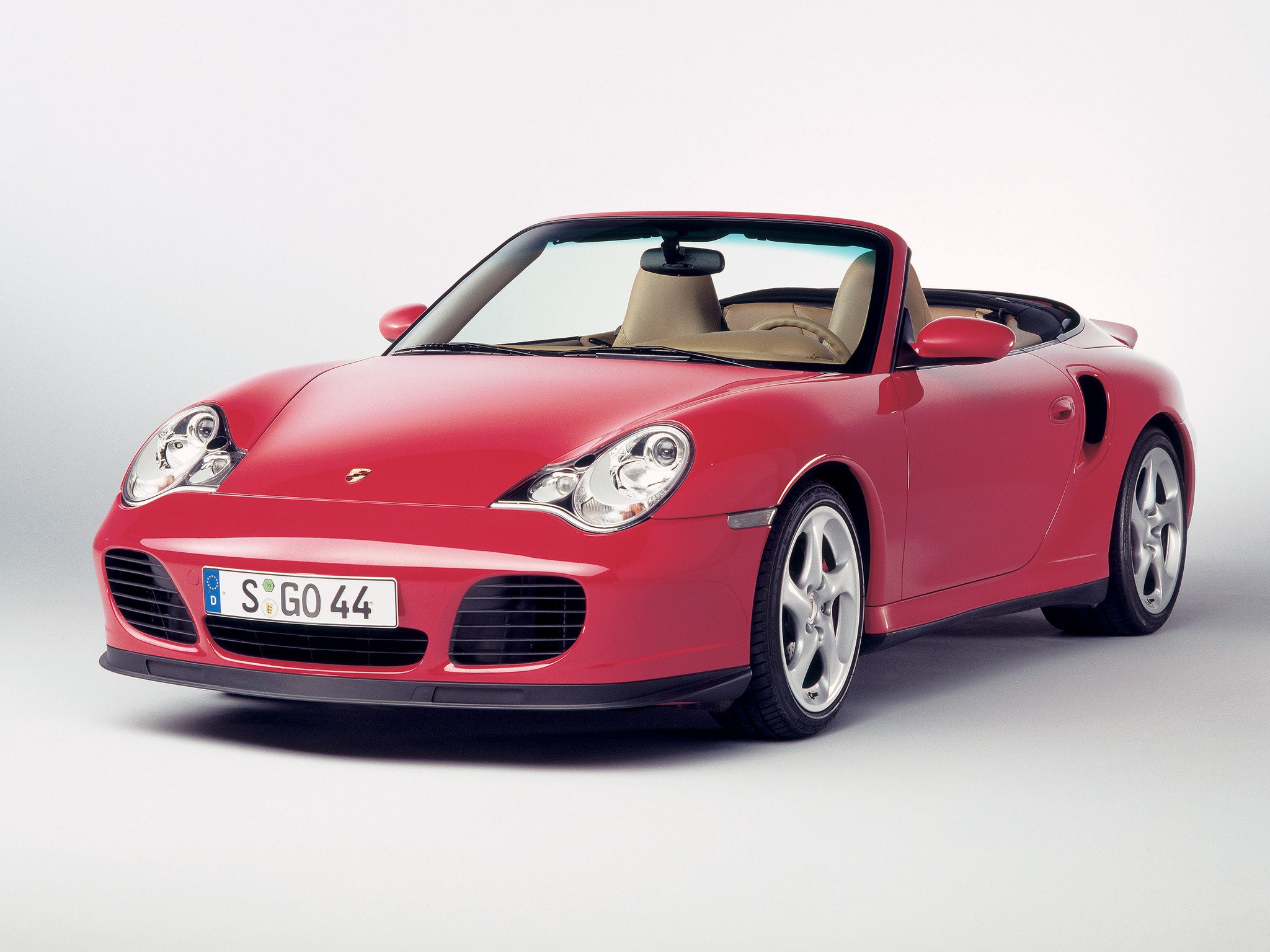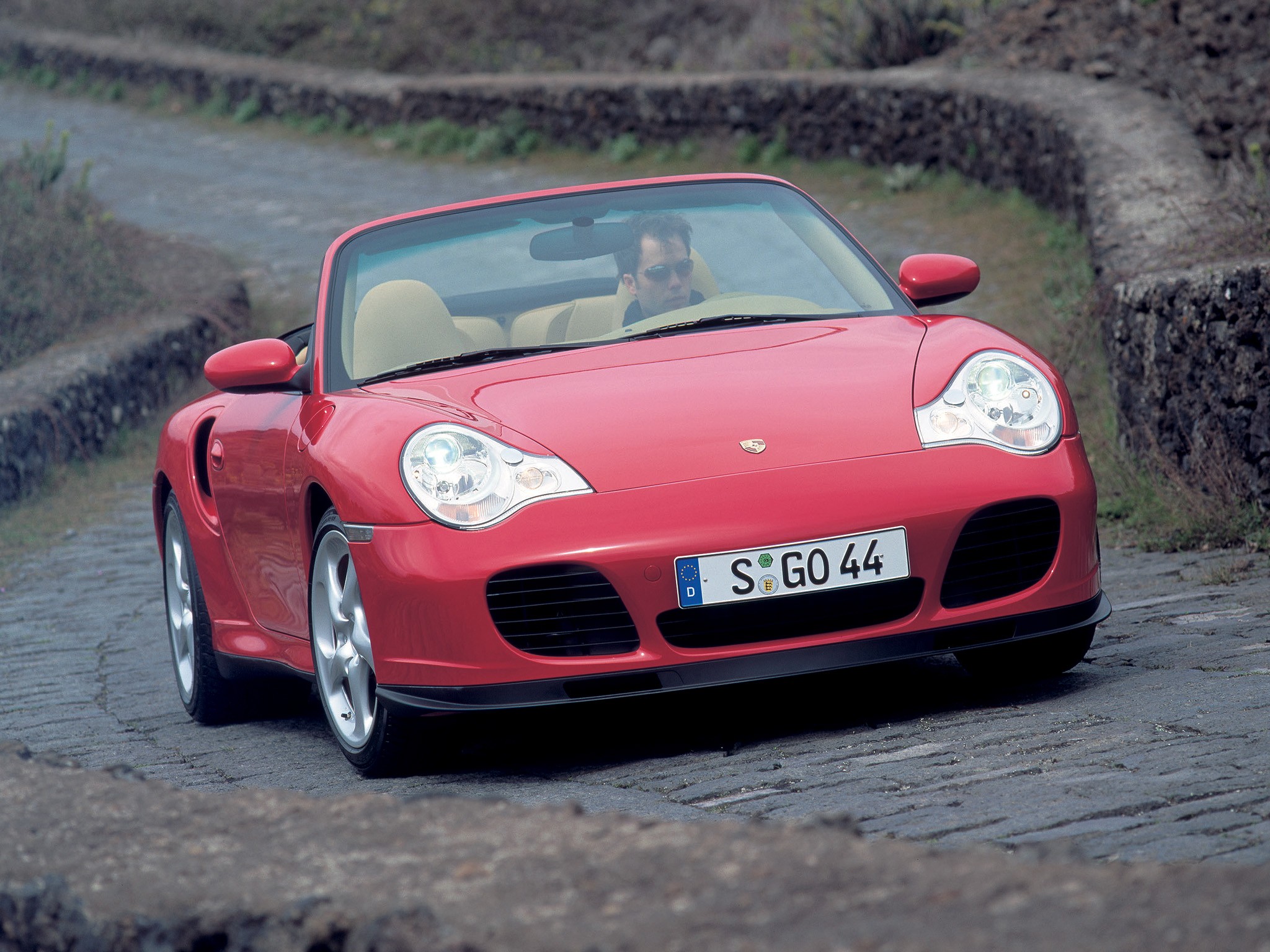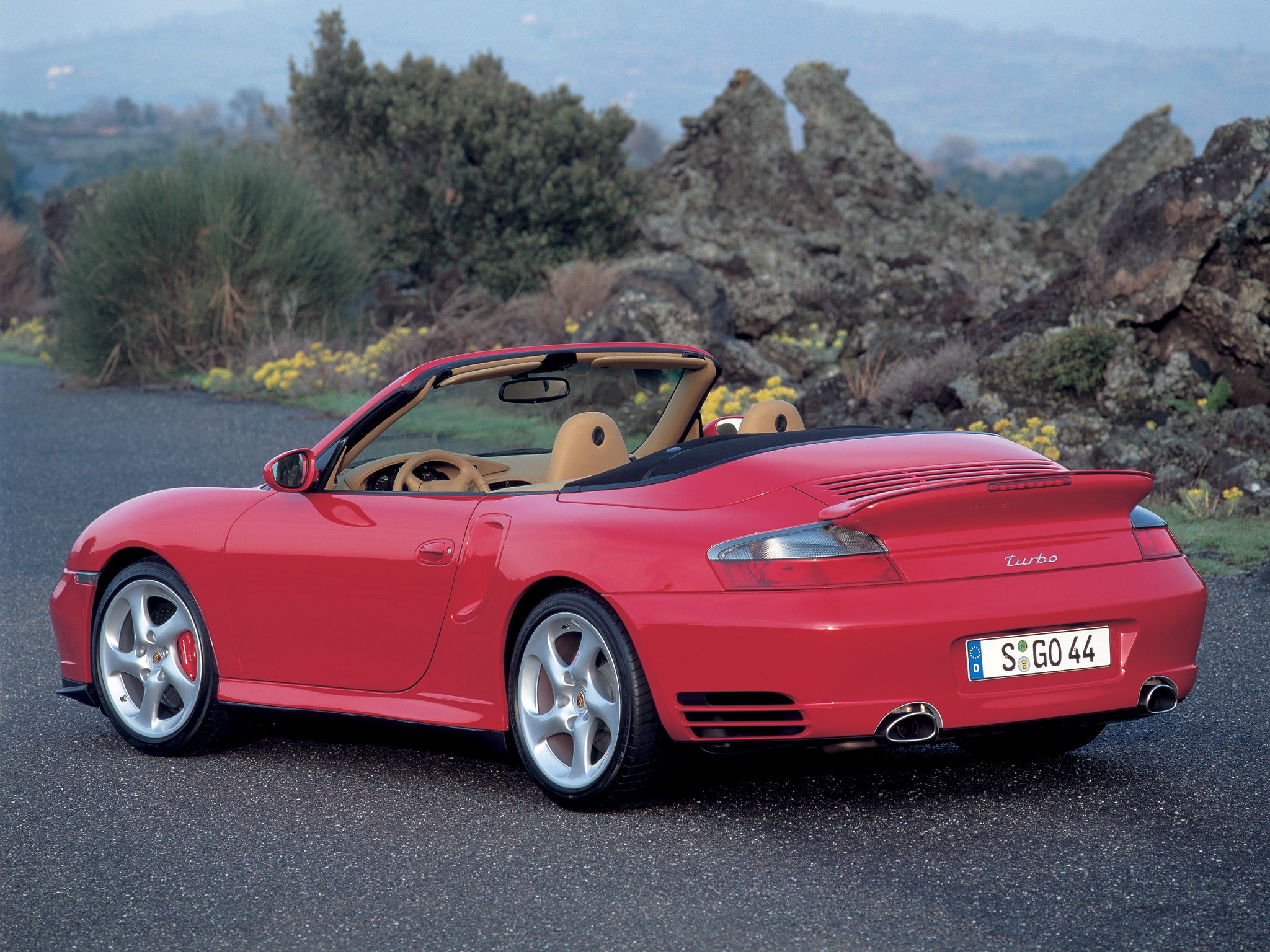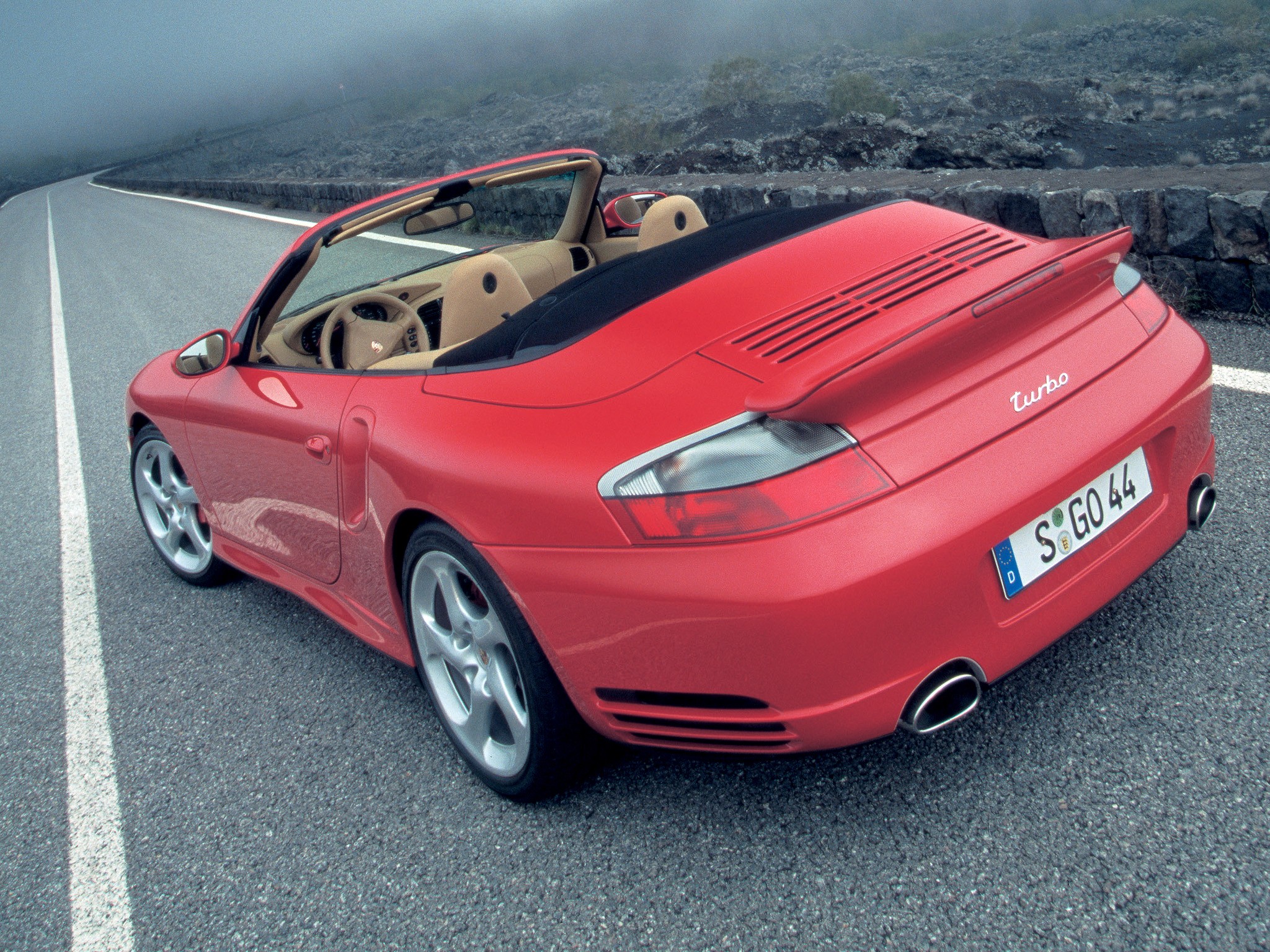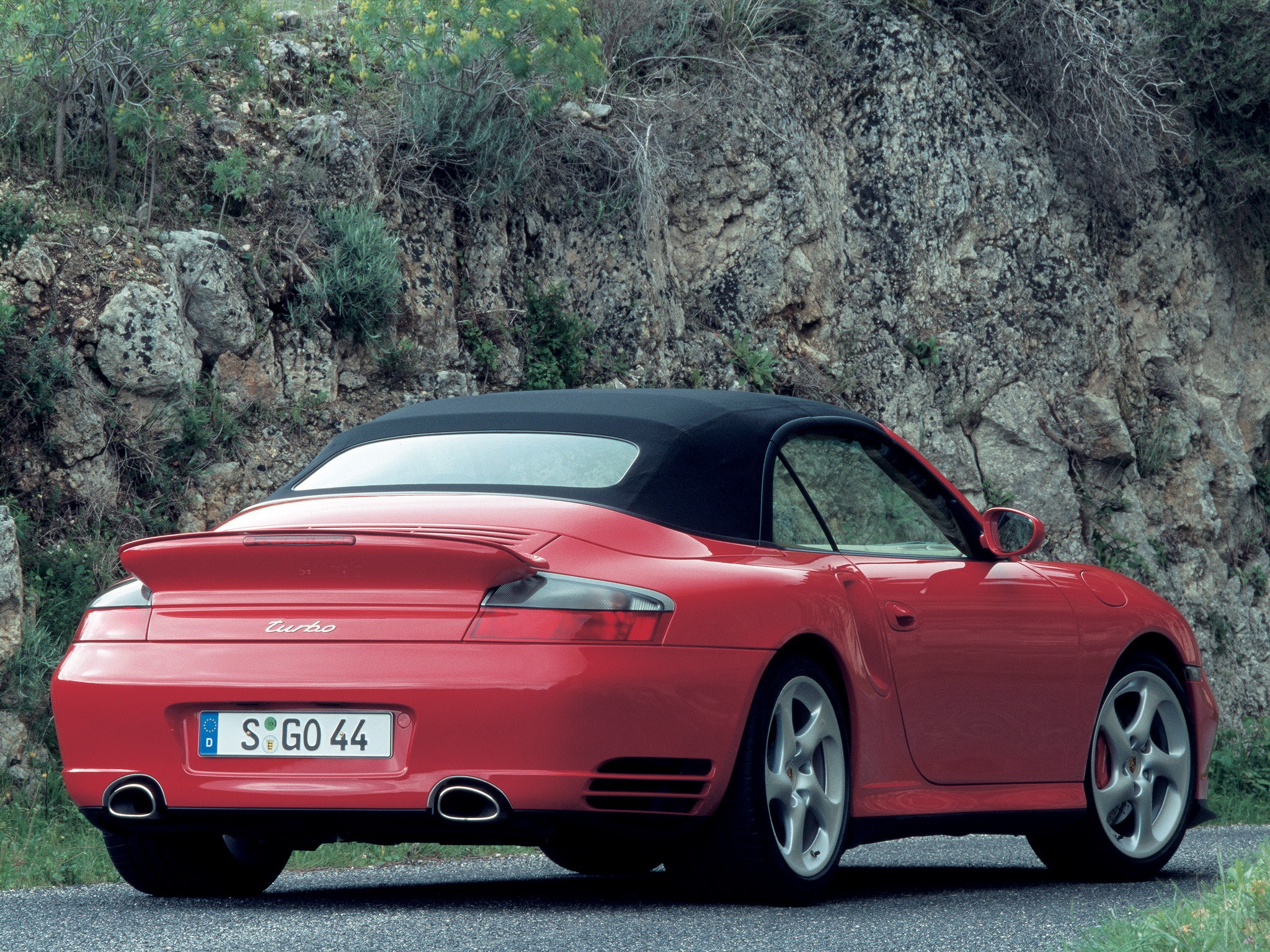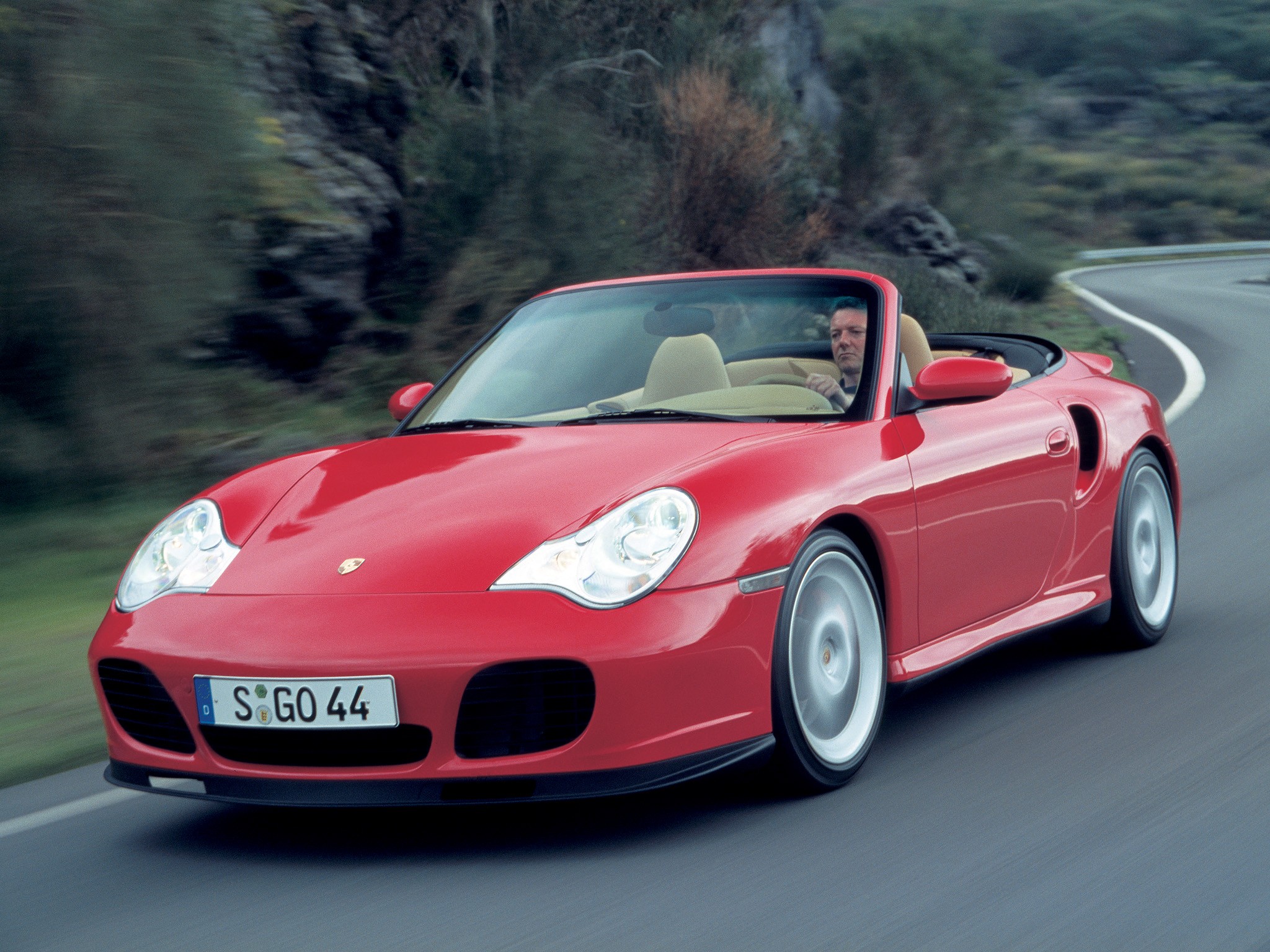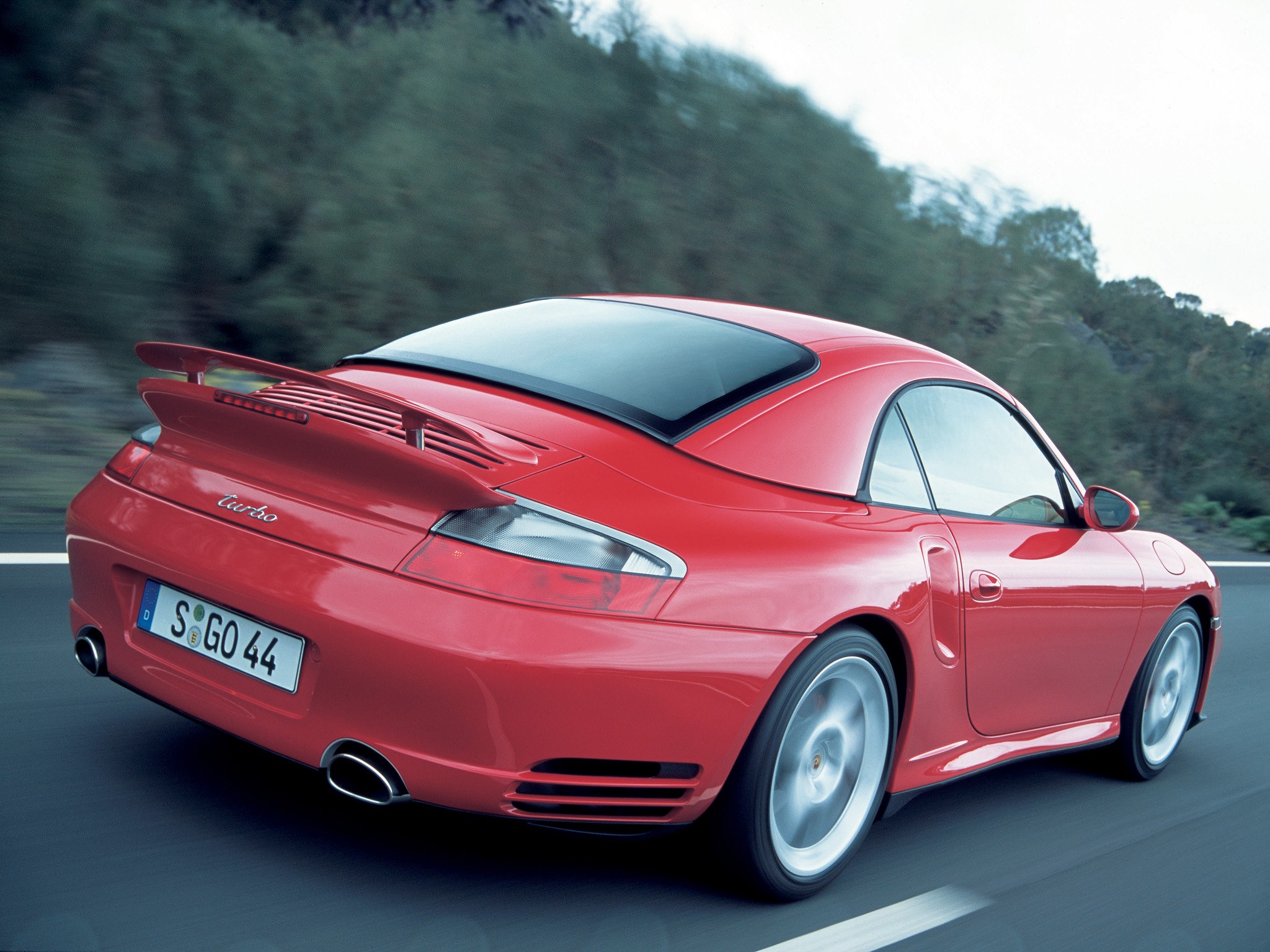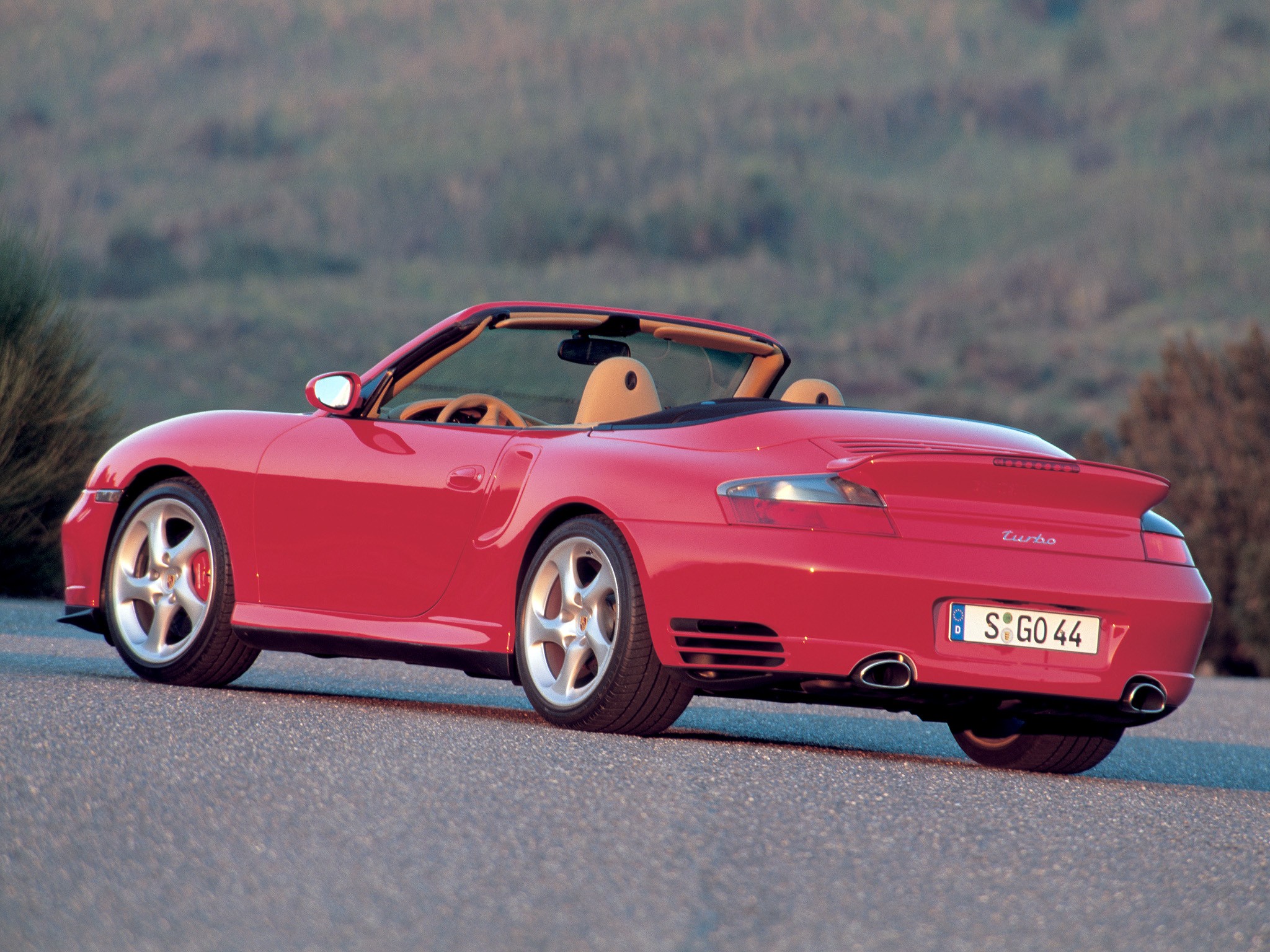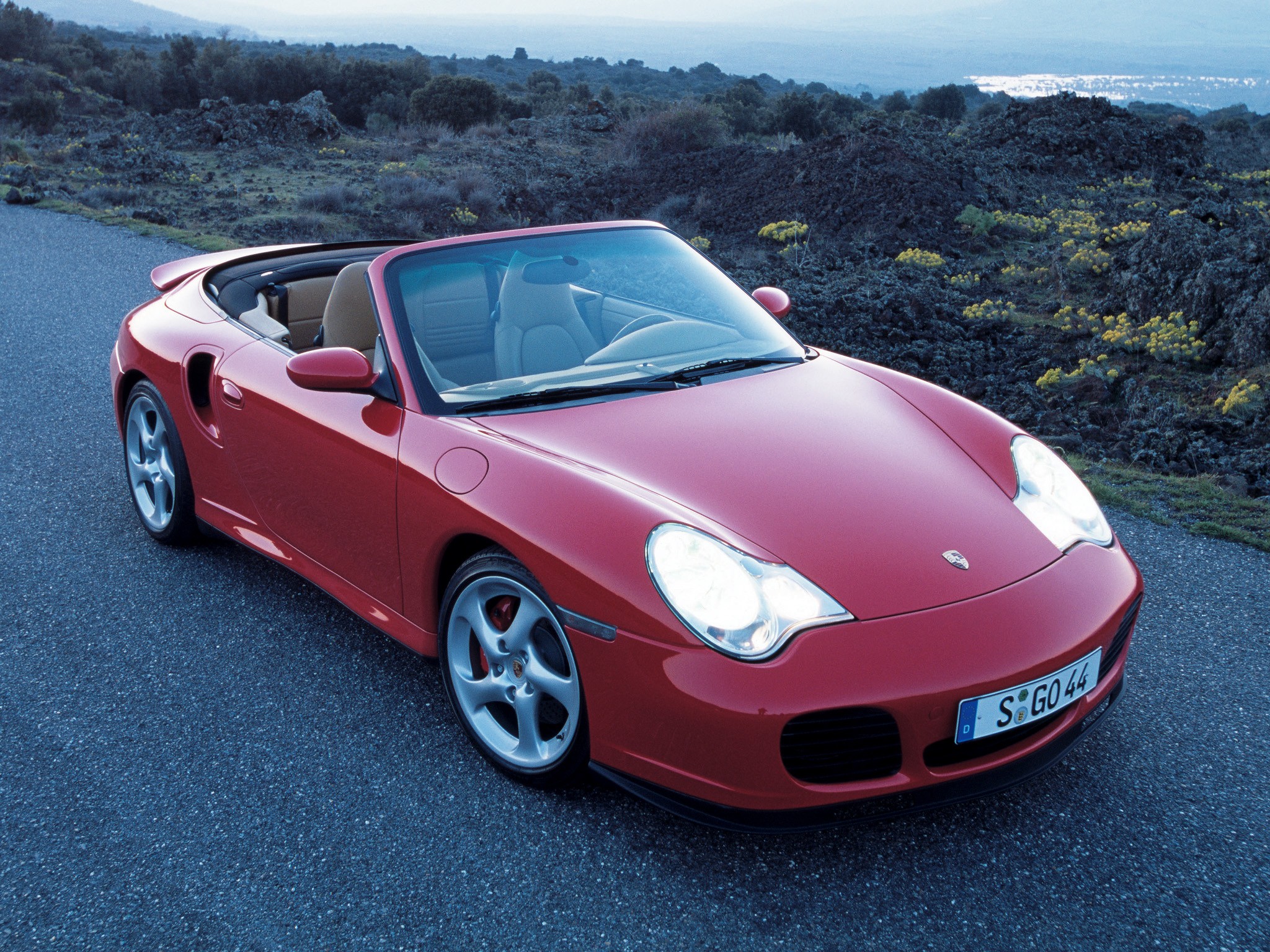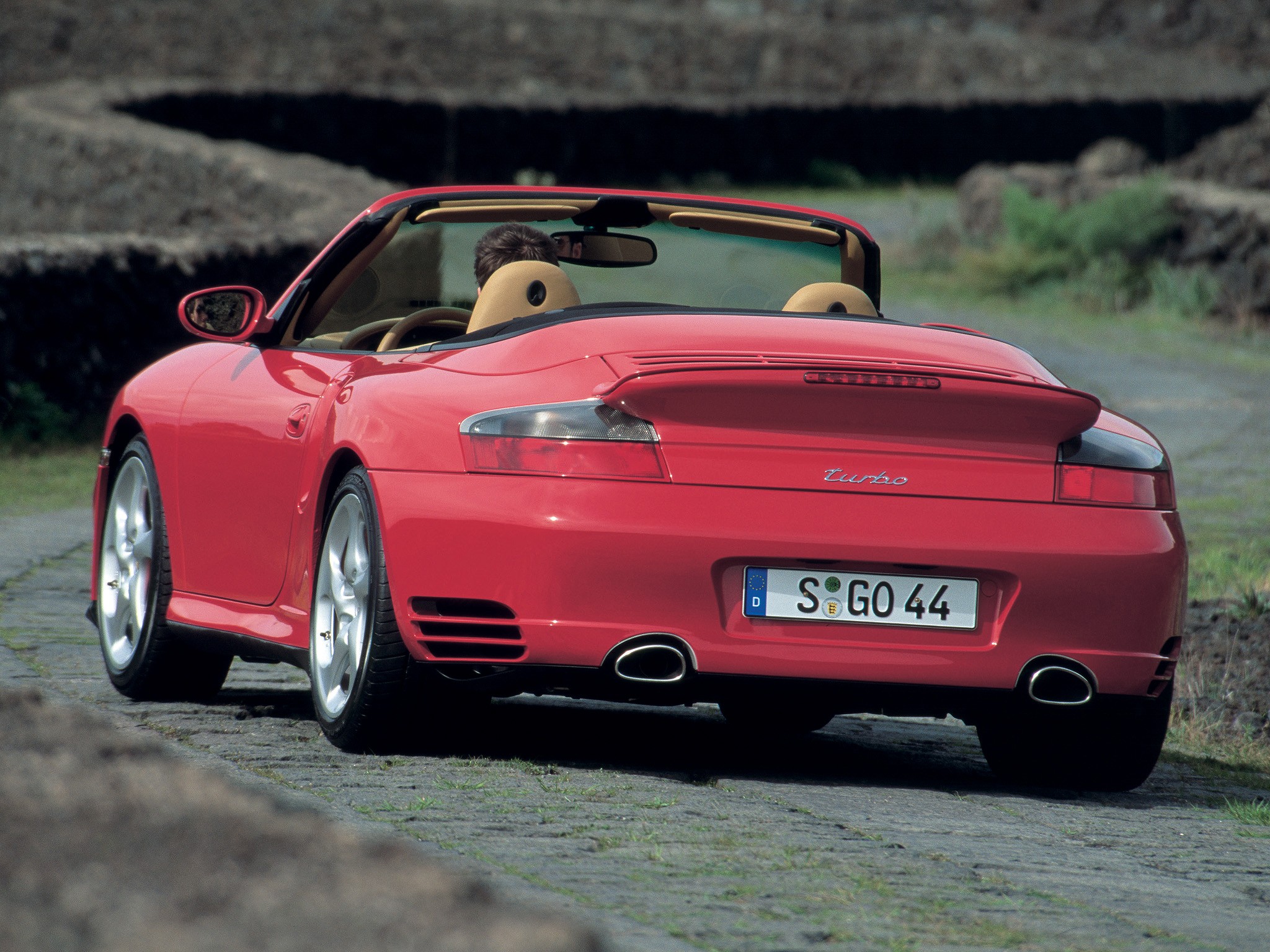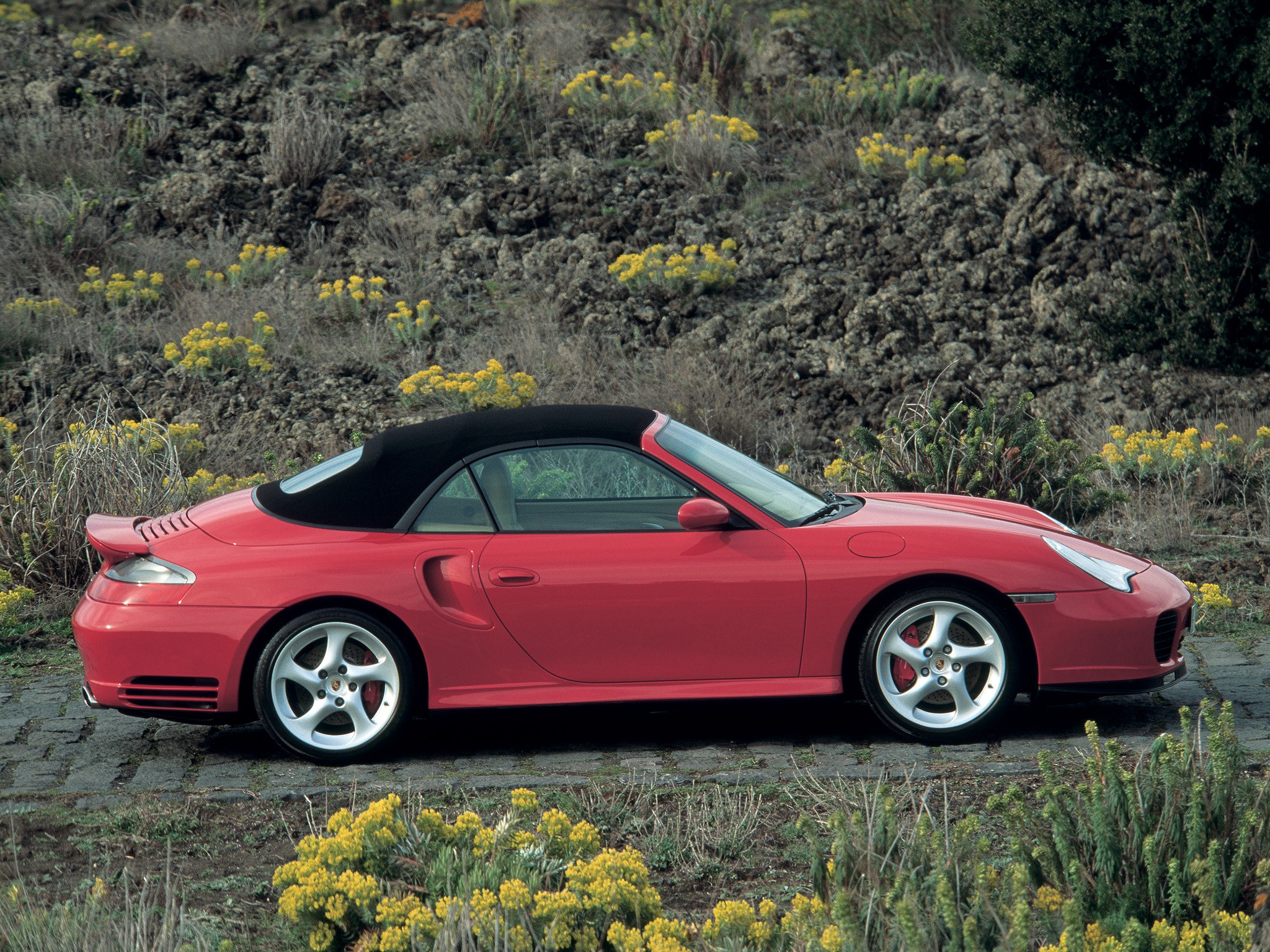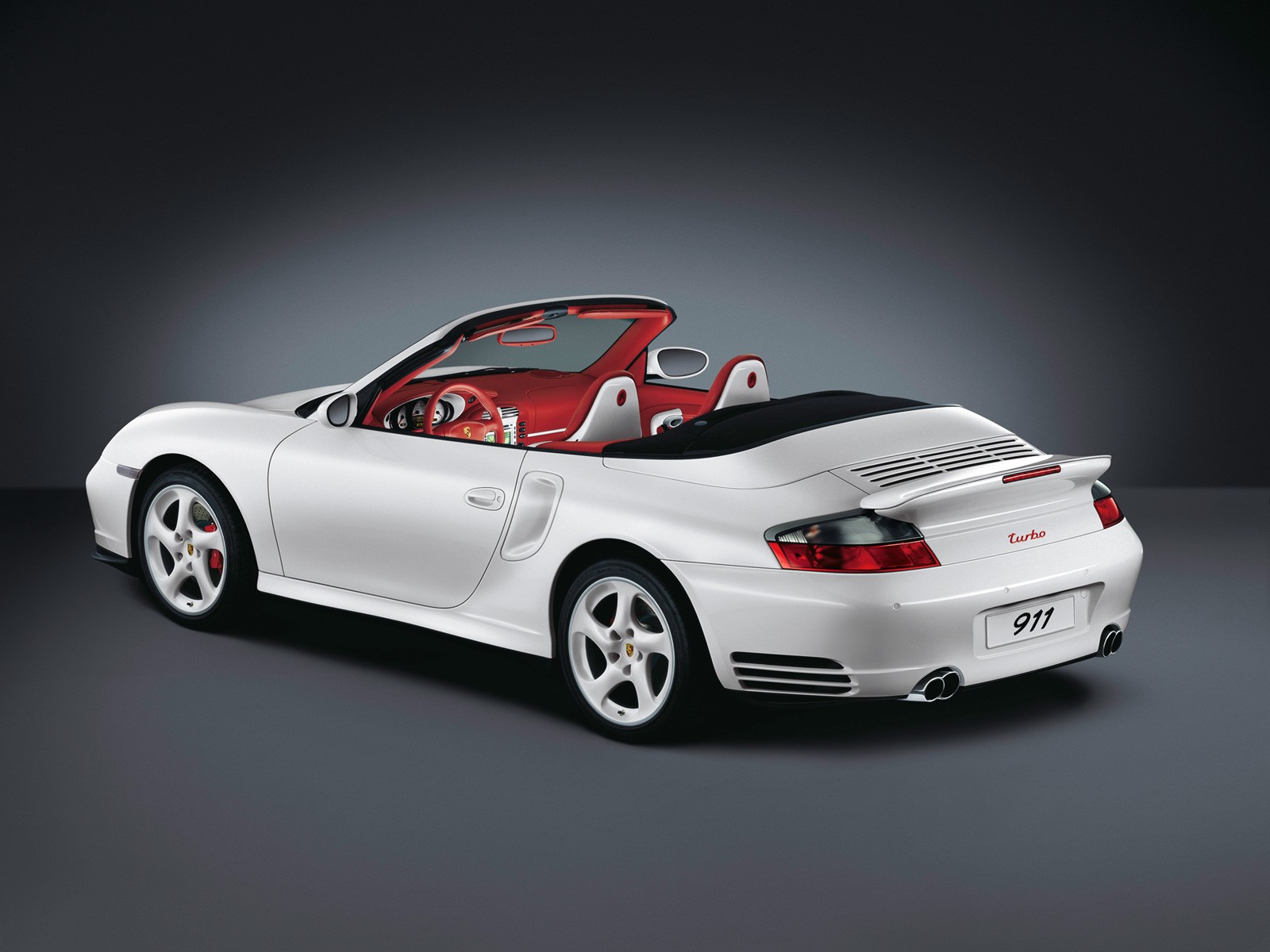(2003 – 2005) Porsche 911 Turbo Cabriolet (996) – Ultimate Guide
Now there is a new top model in the Porsche 911 Cabriolet range – a truly outstanding car with mighty air scoops at the front and on the sides to show the world that an open-air Porsche Turbo is back in the market after 14 years. Maximum output of the flat-six power unit with forced air feed from two turbochargers is 309 kW (420 bhp) at 6000 rpm. And the driver who prefers a more relaxed style of motoring from time to time will certainly not suffer with this high-torque power unit, maximum torque of 560 Newton-metres or 413 lb-ft being delivered consistently all the way from 2700 to 4600 rpm.
The 911 Turbo Cabriolet comes with a fully-retracting roof moving down beneath the roof compartment lid whenever opened. The entire process of opening or closing the roof is masterminded electro-hydraulically within just 20 seconds.And the driver is able to operate the roof not only with the car at a standstill, but also while driving at a speed of up to 50 km/h or 31 mph. Even under these conditions, the entire process of opening the roof does not take one second longer, only the process of closing the roof requiring about six seconds more due to greater air resistance. A wind deflector and a hardtop both come as standard on the 911 Turbo Cabriolet.
Not only the wide wheel arches extended 60 millimetres or 2.36 further out than on the 911 Carrera Cabriolet give this very special Turbo model its characteristic looks and design, but also the intake openings for the intercooling system on the rear side panels. Further features typical of this model are the charge air outlets on the lower side section of the rear body panel. Yet another characteristic feature is the retracting rear wing serving to reduce lift forces on the rear axle. In conjunction with the striking lip on the front spoiler, this ensures the necessary aerodynamic balance required on an outstanding sports car of this calibre with its supreme driving dynamics.
From the front, the car’s thirst for fresh air is obvious at first sight: Three large openings guide the flow of cooling air to the three radiators in front of the wheels and in the middle of the car. Two further openings in the front spoiler lip, in turn, ensure an efficient flow of fresh air to the high-performance brakes.
Engine / Transmission
Two turbochargers switched in parallel are crucial to the supreme power and performance offered by this outstanding six-cylinder. Drawing in air through a single-unit air filter housing, the turbochargers first compress the flow of air and then guide the ongoing stream through an intercooler in each of the wheelhouses behind the rear wheels, after which the air flow comes together again in front of the throttle butterfly operated electrically.
The turbocharged power unit forms a perfect team with variable valve management and a variable charge cycle, making this high-performance power unit even more exclusive in technical terms. The system is made up of four valves per cylinder, infinitely controlled camshaft adjusters and switching valve tappets, and proudly bears the name VarioCam Plus. The result is optimum power and torque management, appropriate reduction of fuel consumption and exhaust emissions, and an equally appropriate improvement of motoring refinement.
The Turbo Cabriolet comes as standard with a six-speed manual gearbox, but maybe fitted as an option with Porsche’s Tiptronic S automatic transmission. This five-speed automatic also featuring a manual gearshift via paddles on the steering wheel is specifically geared to the superior power and performance of the turbocharged engine, the gearshift points adjusting infinitely to the driver’s style of motoring and the route he is taking.
Chassis
Like the Coupe, the new 911 Turbo Cabriolet comes as standard with four-wheel drive complete with a viscous multiple-plate coupling conveying 5 per cent of the engine’s power to the front wheels on a good road surface with firm grip. Whenever road conditions deteriorate, for example as a result of wet or slippery surfaces, up to 40 per cent of the engine’s drive power is conveyed to the front wheels for superior traction at all times.
The bodyshell of the Porsche 911 Turbo Cabriolet is based on the body structure of the Coupe. The main differences are specific reinforcements and strengthening body elements wherever required, serving to replace the stabilizing effect of the fixed roof. To increase body stiffness, the body-in-white of the Cabriolet comes with reinforced side-sills featuring body panels and elements doubled in thickness, additional junction plates and so-called shaft reinforcements behind the B-pillar. Indeed, this is the first Porsche sports car to use ultra-strong DP600 steel at this point in the interest of maximum strength and stiffness. A further feature is that the shaft reinforcements are not only welded, but also bonded, this combination of joining technologies and the additional reinforcement provided by the bond serving to take up energy even more consistently in a collision. Benefitting from the sum total of these body modifications, the bodyshell of the new 911 Turbo Cabriolet is one of the stiffest open-air structures within the 911 model series, like the open-air version of the Carrera 4S recently introduced into the market.
Like on all Porsche 911 Cabriolets, two rollbars featured as standard efficiently protect the car’s occupants in a rollover. Hidden discreetly behind the rear seats, the rollbars move up within split-seconds under spring pressure as soon as a sway sensor determines that the car might roll over.
Active safety in the 911 Turbo Cabriolet is enhanced significantly by PSMPorsche Stability Management featured as standard. PSM serves to stabilise the car both longitudinally and laterally by intervening in the engine management and the brake system as soon as the 911 Turbo Cabriolet exceeds its maximum limits when driven to the extreme. So in practice PSM does not in any wayr estrain the sporting character of the 911 Turbo.
To ensure supreme stopping power at all times without the slightest fading, the new Turbo Cabriolet comes with four-piston fixed-calliper brakes plus inner-vented, cross-drilled brake discs front and rear measuring 330 millimetres or 13.00 in diameter. Porsche Ceramic Composite Brakes (PCCB) are available as an option, setting new standards in terms of brake response, fading-free performance, low weight and a long service life.


